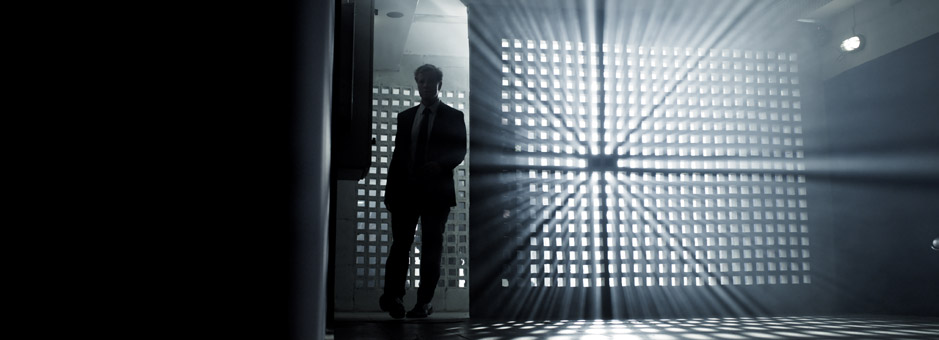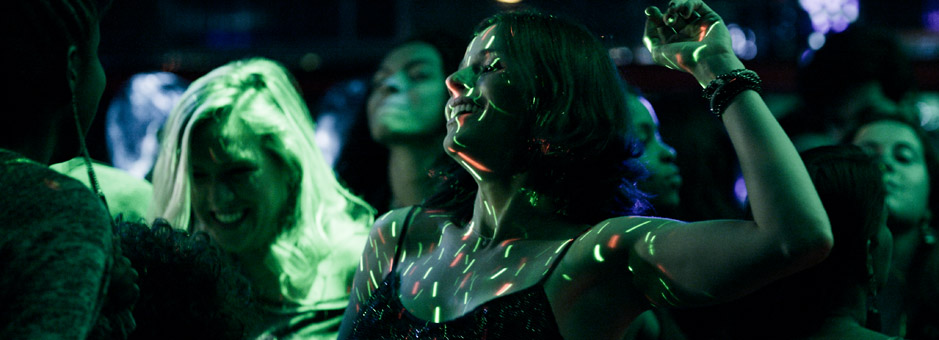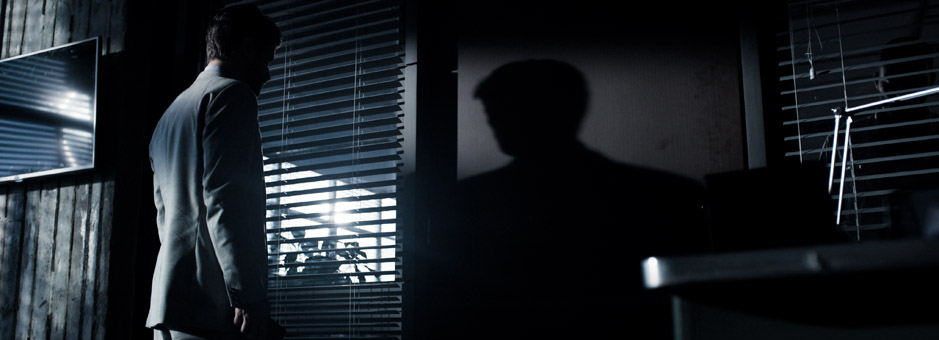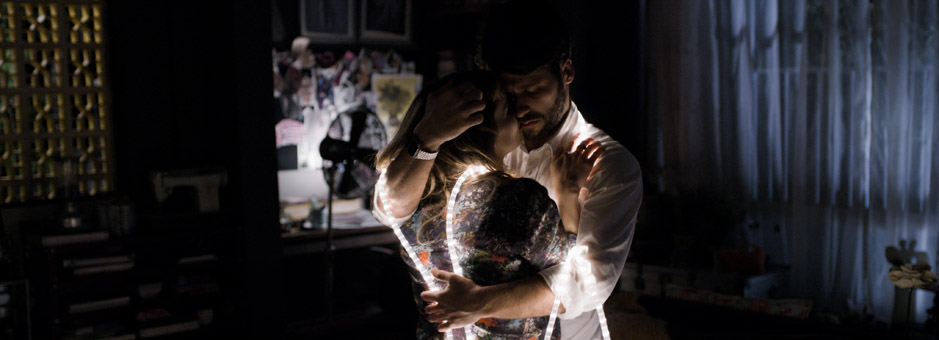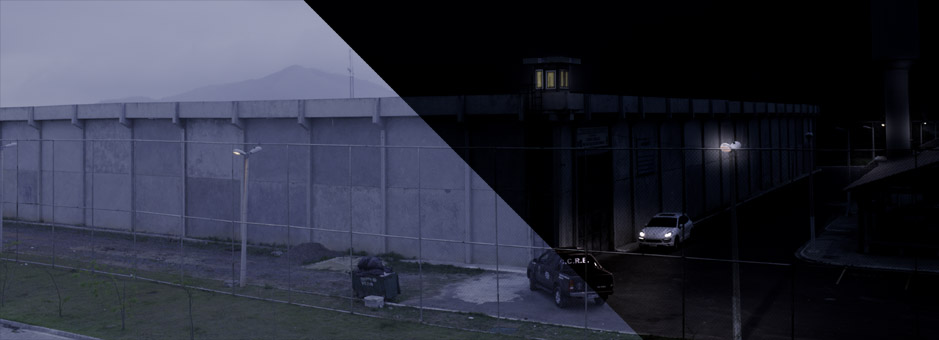Meet The Colourist
Saulo Silva
Editor Colourist, TV Globo SA, Brazil
Brazilian TV Globo celebrates its 50th anniversary this year. Since its inauguration in 1965, TV Globo has become one of the largest television centres in the country, the second-largest commercial TV network in annual revenue worldwide and the largest producer of telenovelas.
Almost 90% of the network's programming is produced in-house, with the production of close to 2,500 annual hours of telenovelas and programmes, as well as over 1,800 hours of telejournalism.
In this interview Saulo Silva, TV Globo’s talented colourist, shares his experience.
How did you start out in post and become a colourist? Was it luck or a ready mapped out plan?
In 1996 I was graduating in electronics and my school received an invitation of internship from TV Globo. I was a finalist for a vacancy as an audio operator, but, realising that it wasn't what I really wanted, in the middle of the interview I asked to go into post-production as a video operator. The board accepted and I got a chance to do another interview with a new committee, which turned out to be a success. So it was not completely luck, it was also a good deal of willpower and determination.
Later, in 1998, I was invited to join a new department at TV Globo called ‘Colour Correction’. In that case, I was lucky!What sort of content do you work on?
All sorts. I have worked with music videos, mastering shows for DVD and Blu-ray, commercials and even a movie. But on a daily basis I work with TV shows, series and telenovelas.
In fact, the first show ever colour graded at TV Globo, using Baselight, was Sinhá Moça, an epic soap opera with Sérgio Tortóri as DP. We really had a lot of fun using all the tools, filters and plugins that Baselight made available. It was a time of discoveries and an explosion of creativity, possibilities and results.
What projects have you been working on recently?
I did a Brazilian soap opera that was nominated for a Grammy called Avenida Brasil, with the DP Fred Rangel. This show had an enormous success all over the world and was a great job in terms of photography. Also, I had the great opportunity to follow the sessions and work on a television version of a feature film called O tempo e o Vento with Affonso Beato ASC as DP.
Last year, I finished a thriller called O REBU where I worked with the DP Walter Carvalho ABC for the second time (the first time was on a series called O Canto da Sereia). Shortly after, I joined a police series called Dupla Identidade with Gustavo Hadba ABC as the DP.
I was invited by the Director Mauro Mendonça Filho and endorsed by Roberto Barreira e Raymundo Barros, Directors of Operations and Technology respectively, to be a part of the team to create a high-end workflow on 4K RAW data from the Sony F55, using ACES and with multiple deliverables including DCP packages for feature films. We used Baselight as our main station, conforming, grading, finishing and delivering.
This year I joined forces with others on my team to work on three different soap operas - Sete Vidas, Babilônia and Verdades Secretas - and there are three more coming soon.
So, it’s a very eclectic mix of projects and all of them at same production centre, TV Globo.
What advice would you give to someone looking to start a career as a colourist?
A lot of people ask me that. In my opinion it doesn't depend only on your education, but on the skills you build throughout your career. Within our crew, we have a lot of different backgrounds, and also great talents.
The most important thing for me is to have a good knowledge of video signals and broadcasting systems and/or feature films. You should like movies, design, publicity and art and also have a great understanding of photography and lighting.
Also, you must not mind hard work alone in the dark, the pressure of tight deadlines, changes of opinions and rework. And last, you should have in your mind that you need to learn something new all the time, because it’s an activity that evolves every day.
A successful colourist needs flexibility and a good understanding of workflow, as well as other relevant areas of production and post-production that you’re likely to interact with. Colour grading also requires concentration, discipline, personality, creativity and a decision-making capacity. But the most difficult thing, in my opinion, is sometimes to abandon your own preferences in favour to the concept.
What makes for a good day at your desk?
When I have to transform a day shot to a night one, what we call a day for night. I love to create an entire environment of light and shadows and succeed in creating the illusion. The guys always say I’m a specialist at it.
How has your role as a colourist changed in recent years?
It has changed a lot in the last 17 years! In the beginning, at least for me, it was very hard to make people understand how fascinating and important the colour grading activity is. So, we had to live with prejudice and lots of distrust. It was a time when people didn't realise they could manipulate images with so many resources in post-production, mostly because they had never needed this before. Therefore, it wasn't just a matter of doing a good job, but to prove how the artistic vision united with technological value was important to the process.
Also, in the beginning I worked on hardware-based systems, which were extremely complex and, of course, more expensive. They were more limited and less flexible. Now I’m at the pilot seat of a Baselight EIGHT system, the most powerful software base in the market. Creativity is the only limit.
Tell us about your DI suite and Baselight set-up?
We have five Baselight stations in five suites perfectly designed for the job: all grey and black walls with low light (except for the back light panel for white balance and reference).
Baselight is the centrepiece of our integrated 4K post-production cloud, sharing data directly with networked compositing, editing and VFX workstations, as well as the other four Baselight systems. This effectively transforms our colour grading suites from post-production “islands” into a collaborative process, increasing creativity significantly, 24/7, 365 days of the year.
What’s your single most favourite thing about Baselight?
Flexibility, agility and uncompressed file performance. It is too difficult to choose just one.
What does Baselight give you that other systems cannot?
To me the most important thing about Baselight is the concept.
Many other systems were designed to complement a previously existing system, or evolved from hardware platforms. Baselight is the opposite. It was born in software and was conceived to be a dedicated colour grading suite. Everything else was implemented on that platform, preserving the integrity of the colour corrector. Many of these features were added or developed following customer requests or feedback. I know this because when I run Baselight today I can see many of the requests that I've made as a client since 2006. The best of them all is the smart dissolves.
Can you describe if/how Baselight increases your productivity and creativity?
Since the very first time I used Baselight, I have always been impressed and appreciated the fact that it allows me to grade in real time while simultaneously carrying out intensive tasks, such as ingest and rendering, in the background.
Another good thing is the dual 10Gb connectivity that permits me to use any other machine in the network to render, to grade or as storage.
I definitely make the most of the numerous benefits available to me on Baselight as a colourist, but the most important thing for me is its flexibility and infinite possibilities. You can combine simple tools to create amazingly complex results! Among these tools I consider the compositing a particularly great feature.
Another huge benefit is that on one single system you have a DI solution, colour space management, transform, conform and editing, colour grading and also compositing.
What are the current challenges in getting the look you want?
Actually, ever since I started using Baselight, there are hardly any limitations for me.
The most important thing for me today is how the footage is captured. As long as it comes in LOG or RAW, and with the right exposure, “no” is a word that doesn't make part of my day.
Do you enjoy working directly with the raw data within Baselight? What are the benefits?
The best benefit for me is being able to control the workflow from the beginning to end, just working with metadata and preserving the original footage.
The first time I made use of the RAW data, I was invited by Director Jayme Monjardin to join the Colorworks team in Los Angeles to help to mark the light of parts of the TV version of O Tempo e o Vento; there, I got to work on the F65 ACES 4K workflow with all the support and expertise of the great team at Colorworks.
The last time, I was back at my desk completely by myself, so, after some guidance from Peter Postma at FilmLight (and several reads of the Truelight Colour Spaces User Guide), I found that it’s very intuitive and relative easy to manipulate and convert with Baselight colour management.
The grading of Dupla Identidade was my first multi-deliverables project and in fact, using the colour management of Baselight, it was simple to get the result I needed for all deliverables, even cinema.
Yes, I have followed this shift closely since I joined the industry. Currently the partnership between the DP and colourist is very narrow. In recent years, though, I have seen a gradual increase in the colourist’s role and participation in pre-production. I think this comes from understanding that the end product is the result of precise alignment of different areas; not just photography, lighting and colour grading, but also the scenery, the costumes, art and engineering.
A little guidance based on experience from previous projects or even the exploitation of resources in post-production can provide big results in the long-term.
So what do you like to do after you have been in a darkened room all day?
I love music and am a reasonably good singer. I love going to karaoke with my family and friends to spend some quality time there. I also love going to the movies with my wife, Christiane, and doing photo sessions with my very talented daughter, Isabella Costa.
I'm a huge fan of the movies, so if I could I would go to a theatre every day. But the last movie that blew my mind was Gravity. I found it incredible for so many reasons, but mostly I was amazed to watch the impressive production filmed in 4K ACES on F65, which resulted in those extremely beautiful images.
If you could have graded any movie in your lifetime, what would it be?
The Others, Lord of the Rings or The Matrix.
I have many inspirations, but the first one is my father Rubens Silva (RIP).
I’ve always appreciated the opportunity to listen when there is someone available to teach and this is the reason that I've had a lot of mentors in my lifetime. I'm grateful to each and every one. There are three, though, very important to me in the beginning who have truly helped me to become a colourist: Juarez Argolo, Celso Araujo and Ricardo Waddington.
Juarez gave me the opportunity to measure the importance of the tool I had and how to drive it technically, carefully and safely. Celso taught me what I had to see and how to see it, and Ricardo pushed me out of my comfort zone, giving me the opportunity to make my first soap opera and also encouraging me to have confidence to take risks and to believe myself.
In addition to this, there is one man that since the beginning I chose as an intellectual mentor. His name is Kevin Shaw, he is a renowned colourist, and I’m proud to say that now, I can call him my friend.
Definitely, VFX and compositing. I’m a great enthusiast of both.
Join In
If you want to participate in our MTC programme, we'd love to hear from you. Contact:
Alexa Maza
e: [email protected]

Photographer: Gleice Barros
“Ever since I started using Baselight, there are hardly any limitations for me.”
Details
Colourist: Saulo Silva
Role: Editor Colourist
w: TV Globo SA



